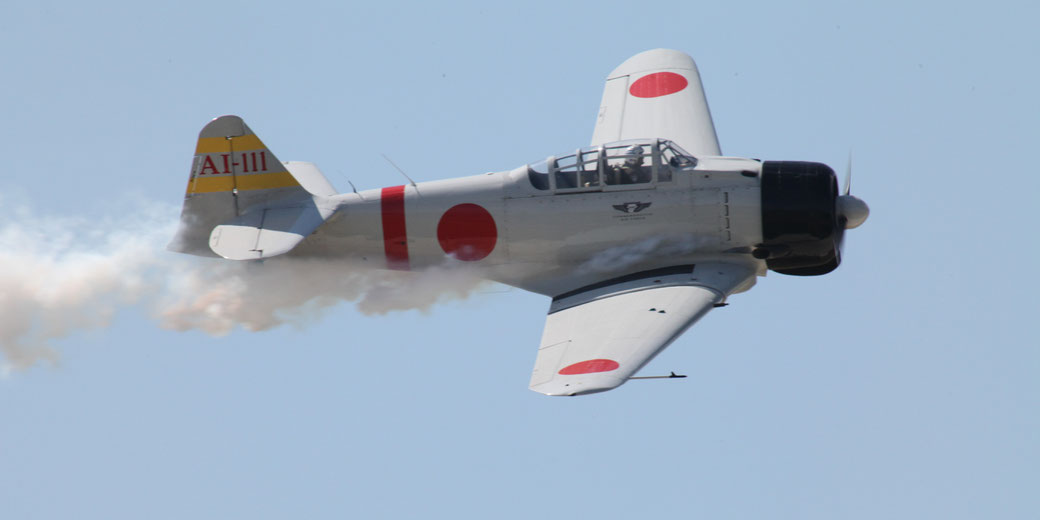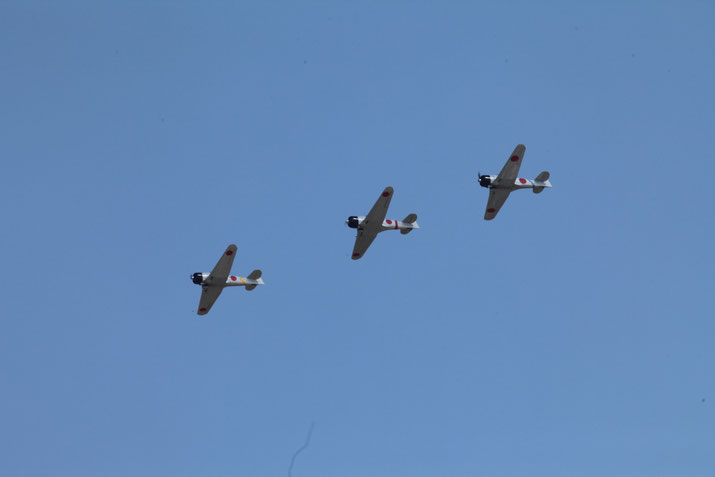Who were the fanatical kamikaze pilots of WWII and how deadly were they?

In the final stages of the Second World War in the Pacific, Japan used extreme measures as Allied forces moved closer to the home islands.
Among these measures was the creation of kamikaze units, whose pilots carried out suicide missions that involved crashing their planes into enemy ships.
By late 1944, the kamikaze campaign had a major effect on the naval war because it caused heavy casualties and caused panic among Allied sailors.
The origins of the kamikaze strategy
During the worsening situation in the Pacific, Japan’s military leaders developed the kamikaze strategy.
By mid-1944, Japan had suffered devastating defeats at battles such as Midway in 1942, the Philippine Sea in June 1944, and Leyte Gulf in October 1944.
The loss of experienced pilots and the destruction of aircraft carriers hurt Japan’s ability to fight a regular air war.
So, faced with overwhelming American industrial power, Japanese commanders looked for a tactic that could use their pilots’ readiness to give their lives.
It was Vice Admiral Takijirō Ōnishi who proposed forming special attack units, known as tokkōtai, to carry out suicide missions against Allied ships.
Ōnishi would later commit suicide after Japan’s surrender, believing himself responsible for sending thousands of young men to their deaths.
At the time, the term kamikaze, which meant "divine wind," evoked the legendary typhoons that had repelled Mongol invasions of Japan in the thirteenth century.
Military propagandists used the term to glorify the missions and present the pilots as modern warriors defending the homeland.
Under strong social pressure and national pride, young men were encouraged to volunteer in service of the emperor.
Many recruits volunteered because they believed their sacrifice would protect their families and their nation.
Others felt they had no real choice due to the rigid expectations placed on soldiers in Imperial Japan and the cultural ideals of bushido that praised self-sacrifice.
Training and preparation of the pilots
Before flying their final missions, kamikaze pilots usually underwent short and demanding training programmes.
Japan no longer had the time or resources to provide the detailed training that had once been standard for pilots, so many recruits learned only basic flying skills and spent much of their preparation as they studied maps and target plans.
Training often lasted only a few weeks, and instructors emphasised absolute obedience and self-sacrifice.
Pilots wrote farewell letters, took ceremonial photographs, and performed final rituals that made the outcome feel unavoidable.
For these missions, Japan used outdated fighters, trainers, and bombers that were often modified to carry large explosives of 250 kg or 500 kg.
Additionally, the military developed specialised weapons such as the Yokosuka MXY-7 Ohka, a rocket-powered glider filled with explosives.
The Ohka required a bomber to carry it close to Allied ships before release, which made the missions extremely dangerous for the crews.
As resources shrunk further, Japanese commanders became more willing to sacrifice both planes and pilots without concern for the low chance of success.
Other special attack methods, such as explosive motorboats and midget submarines, also reflected Japan’s desperation.
The scale of the attacks
During the Battle of Leyte Gulf in October 1944, the first organised kamikaze attacks took place.
Lieutenant Yukio Seki led one of the earliest missions, and his attack sank the escort carrier USS St. Lo while damaging several other ships.
Seki reportedly told fellow pilots that he did not wish to die, but he obeyed orders and carried out the mission anyway.
Encouraged by these early successes, Japanese commanders expanded the programme.
Between late 1944 and the end of the war in August 1945, more than 3,800 pilots died in kamikaze operations, though some studies place the number closer to 2,800.
At the height of the strategy, kamikaze operations reached their highest point during the Battle of Okinawa between April and June 1945.
Japan launched more than 1,800 suicide sorties to try to stop the Allied invasion fleet.
The attacks sank 36 Allied vessels and damaged more than 200, causing over 7,000 deaths and 4,800 injuries.
One of the deadliest strikes occurred on 11 May 1945, when two kamikaze aircraft hit the aircraft carrier USS Bunker Hill, killing nearly 400 crewmen.
Allied sailors found it difficult to defend against planes that intentionally crashed at high speed, and the mental strain on crews increased steadily.
Survivors described the missions as terrifying because no defence could stop an enemy who intended to die.
The effectiveness of the tactic
By the middle of 1945, kamikaze attacks inflicted heavy damage but failed to halt the Allied advance.
Allied navies developed countermeasures that reduced the success of suicide missions.
For example, combat air patrols intercepted many attackers before they reached their targets, and radar and anti-aircraft guns provided further layers of protection.
With overwhelming air superiority established, American forces restricted Japan’s ability to launch coordinated attacks.
Compared with regular Japanese air attacks late in the war, kamikaze missions hit targets more often, but they came at a cost that Japan could not maintain.
For Japan, the tactic proved costly in both human and material terms. Thousands of young pilots died, many of them teenagers with minimal experience, which further weakened the nation’s already depleted air forces.
Aircraft destroyed in kamikaze missions could not be replaced, and the deaths of trained men reduced Japan’s capacity to defend its remaining territory.
Although the attacks managed to sink several ships, they failed to cause delays significant enough to affect Allied invasion plans.
The experiences of the pilots
From surviving letters and testimonies, historians have learned more about the mindset of kamikaze pilots.
Many described feelings of duty and honour, yet others expressed fear and reluctance.
Letters often spoke of love for family and hope that their sacrifice would have meaning.
On some occasions, pilots reportedly drank alcohol before missions to numb their emotions as they prepared for death.
Several final letters, such as that of pilot Ryoji Uehara, show a deep sorrow at dying so young and doubt about the war’s real purpose.
However, under strict military discipline and cultural expectations, few men could refuse without facing punishment or dishonour.
For the families of pilots, the government provided posthumous recognition and portrayed their deaths as heroic sacrifices for the emperor.
Propaganda even celebrated the missions as acts of supreme patriotism and moral purity.
In reality, though, the situation was tragic. Many of the men were barely out of school, and several expressed private wishes to survive even as they faced their fates.

Did any kamikaze survive?
It is rare for a kamikaze pilot to have survived the attack as their mission was to crash their aircraft into enemy targets, which typically resulted in their own death.
Despite this, there were a few cases where kamikaze pilots survived their missions.
Some pilots may have had technical problems with their aircraft, which prevented them from completing their mission, or they may have missed their target.
In other cases, pilots may have ejected from their planes before the impact, either by choice or due to a malfunction. However, these instances were rare, and most kamikaze pilots did not survive their attacks.
A futile endeavour
After Japan’s surrender in August 1945, the kamikaze programme came to an end.
In the decades that followed, Japanese society engaged in debate about the meaning of the missions.
For some, the pilots symbolised patriotism and sacrifice, while others saw them as victims of a militaristic regime that coerced its youth into pointless deaths.
Across Japan, monuments and museums commemorate the dead, but they also invite reflection on the cost of war and extreme ideas.
At places such as Yasukuni Shrine, the commemoration of kamikaze pilots remains controversial because of the association with Japan’s wartime aggression.
Among historians, the kamikaze strategy continues to receive close study for its impact on the Pacific War.
The attacks showed the extreme situation of Japan’s military leaders as defeat became inevitable.
They also demonstrated the power of ideology and propaganda to drive individuals to extreme acts of self-sacrifice.
Kamikaze missions inflicted significant losses on Allied navies, yet they failed to alter the course of the war because, by the summer of 1945, Japan faced certain defeat through invasion or atomic attack.
What do you need help with?
Download ready-to-use digital learning resources
Copyright © History Skills 2014-2025.
Contact via email
With the exception of links to external sites, some historical sources and extracts from specific publications, all content on this website is copyrighted by History Skills. This content may not be copied, republished or redistributed without written permission from the website creator. Please use the Contact page to obtain relevant permission.





